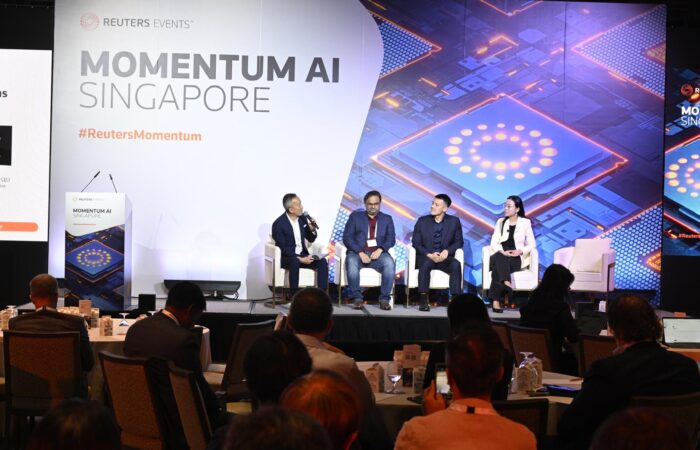
Running a $30 billion company isn’t just about surviving — it’s about mastering the game.
HubSpot’s CEO, Yamini Rangan, has cracked the code, blending bold moves with calculated strategy in her recent podcast: Check it out here . Her insights offer a powerful playbook on adapting to change, leveraging AI, and redefining growth strategies.
AI: The Greatest Equalizer for SMBs
AI isn’t just a shiny new toy for HubSpot — it’s a strategic weapon that’s transforming the game for small and medium-sized businesses.
For SMBs, growth often hits three roadblocks:
- Limited headcount — Can’t afford to expand teams fast enough.
- Tight budgets — No room for massive marketing or tech spends.
- Lack of expertise — They don’t have an army of consultants to rely on.
AI is breaking down these barriers.
Instead of hiring more customer support reps, SMBs are using AI tools to resolve tickets faster. In marketing, AI lets teams craft hyper-personalized messages without spending heavily on data tools or consultants. In sales, SMBs are automating demos and follow-ups, closing deals faster without adding layers of complexity.
HubSpot’s CEO put it bluntly — AI is “history’s greatest equalizer for SMBs.” By leveraging AI, small businesses can now achieve outcomes that once required teams of specialists and huge budgets.
SEO’s New Reality: From Clicks to Instant Results
If SEO has been your bread and butter, the game has changed — and HubSpot learned it the hard way.
Recent Google updates tanked HubSpot’s web traffic, dropping them from tens of millions of monthly visits to just a few million — virtually overnight. The reason? People no longer search for answers; they search for results. Google’s shift from clickable links to direct answers has dramatically reduced organic search traffic.
HubSpot’s solution? A calculated pivot.
Instead of chasing search rankings, they’re diversifying — investing heavily in newsletters and podcasts. Their strategic acquisitions of podcast networks and email newsletters were deliberate moves to build deeper relationships with their audience.
The big lesson? Companies can no longer rely solely on SEO. Smart businesses are building multiple content channels that put them directly in front of their audience.
AI Isn’t Enough — It Has to Be “Necessary”
AI isn’t a magic bullet — and HubSpot’s CEO knows it. The key isn’t just building AI features; it’s ensuring those features become indispensable.
She calls it the “Neat vs. Necessary” test.
- Neat: Cool features that people try once or twice but forget about.
- Necessary: Tools so embedded in workflows that users can’t imagine working without them.
For example, HubSpot’s AI-driven content tool didn’t just launch as a cool add-on — it evolved into a core content partner that marketers use daily. This shift from “neat” to “necessary” is what separates gimmicks from true innovation.
Pricing Strategy: Playing Offense, Not Defense
Most companies are slapping premium prices on AI tools. HubSpot’s CEO is playing a different game.
Instead of treating AI as a high-ticket feature, HubSpot embeds AI directly into their platform — no extra fees, no gimmicks. Their belief? When you provide massive value upfront, revenue follows.
This isn’t guesswork — it’s a deliberate strategy to attract loyal customers by providing superior value without gatekeeping key features.
Speed vs. Consensus: The CEO’s Winning Framework
HubSpot’s CEO thrives in both fast and steady modes — and knowing when to switch gears is her edge.
During challenging times, she optimizes for speed — making fast decisions with a focus on momentum. In stable times, she prioritizes consensus — ensuring teams align on priorities for long-term success.
The ability to shift between these modes is crucial. As she puts it, “If you move too fast, you’ll leave your team behind. If you go too slow, you’ll miss opportunities.”
Growth Strategy: Alignment Over Allocation
Scaling isn’t about throwing money at problems — it’s about ensuring resources are aligned toward the right goals.
When HubSpot expanded to serve larger clients, they didn’t rush to hire a fleet of enterprise sales reps. Instead, they scaled methodically — moving from 200-employee clients to 500, then to 1,000.
This incremental approach ensured their systems, product, and sales teams evolved without breaking under pressure. Growth didn’t come from spending more — it came from aligning teams around clear priorities.
Why Content Diversification is the New SEO
HubSpot’s CEO made it clear: “You have to meet your customers where they are — not expect them to come to you.”
That’s why HubSpot has heavily invested in:
- Podcasts — Acquiring podcast networks to expand their reach.
- Newsletters — Buying email newsletters to build stronger direct relationships.
- Video Platforms — Prioritizing platforms like YouTube, TikTok, and Instagram to connect with audiences directly.
The takeaway? Relying on one platform for leads is risky. The new game is content everywhere — and HubSpot’s playing to win.
Leadership in a Hyper-Scrutinized Role
Being CEO of a $30 billion company means you’re constantly judged — by the board, investors, employees, and customers.
HubSpot’s CEO knows she can’t please everyone. Her North Star? “Solve for the customer.”
When faced with tough decisions, she follows a simple rule: prioritize customer outcomes above all. That clarity drives smarter choices, even in uncertain moments.
The Final Word: AI as a Survival Strategy
HubSpot isn’t just riding the AI wave — they’re shaping it. From automating customer support to personalizing marketing campaigns and refining content strategies, AI is embedded in everything they do.
The takeaway is clear: if you’re a founder, leader, or decision-maker, the future belongs to those who innovate fast, deliver real value, and stay relentlessly customer-focused.
Subscribe To Get Update Latest Blog Post









Leave Your Comment: